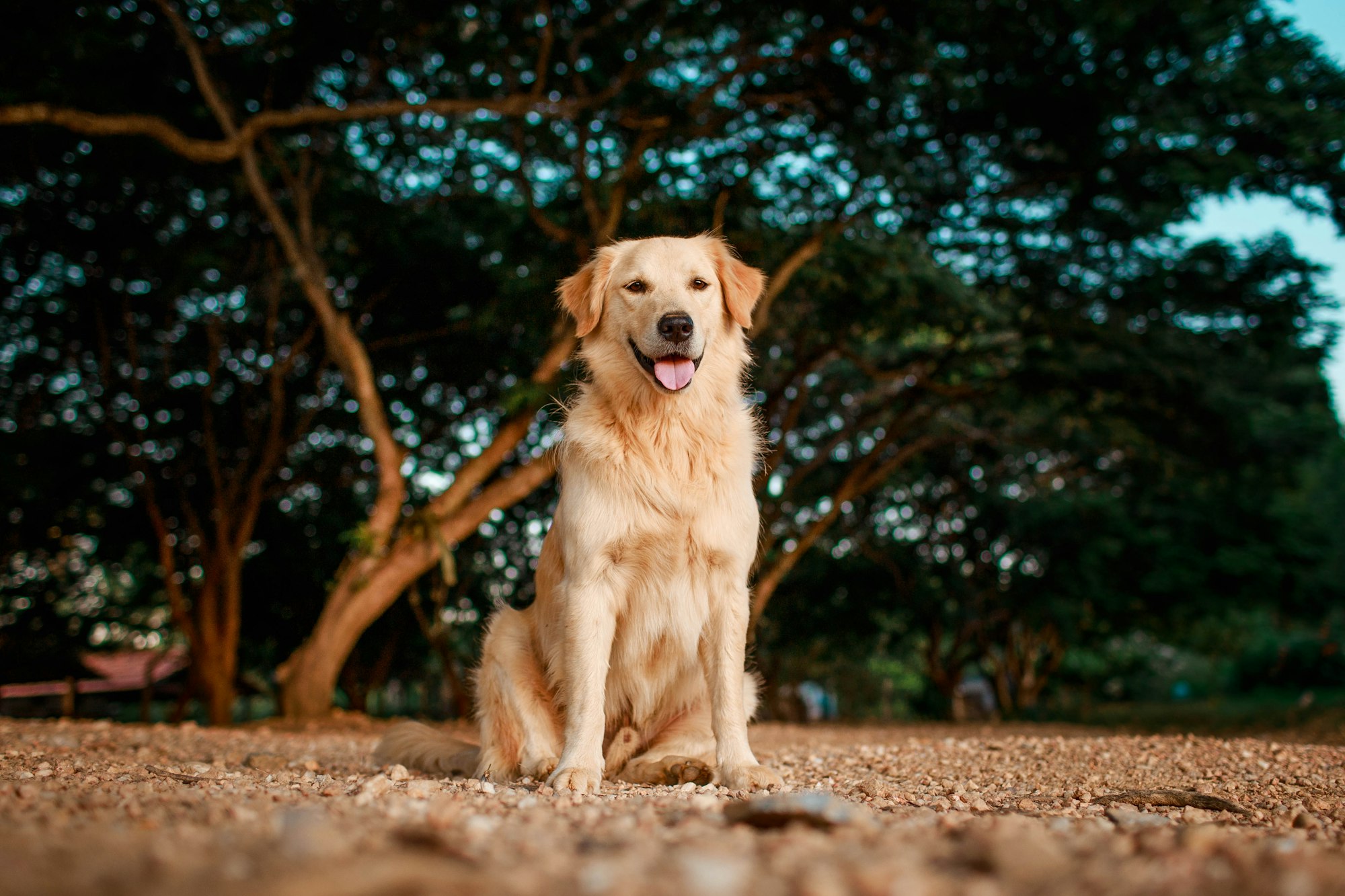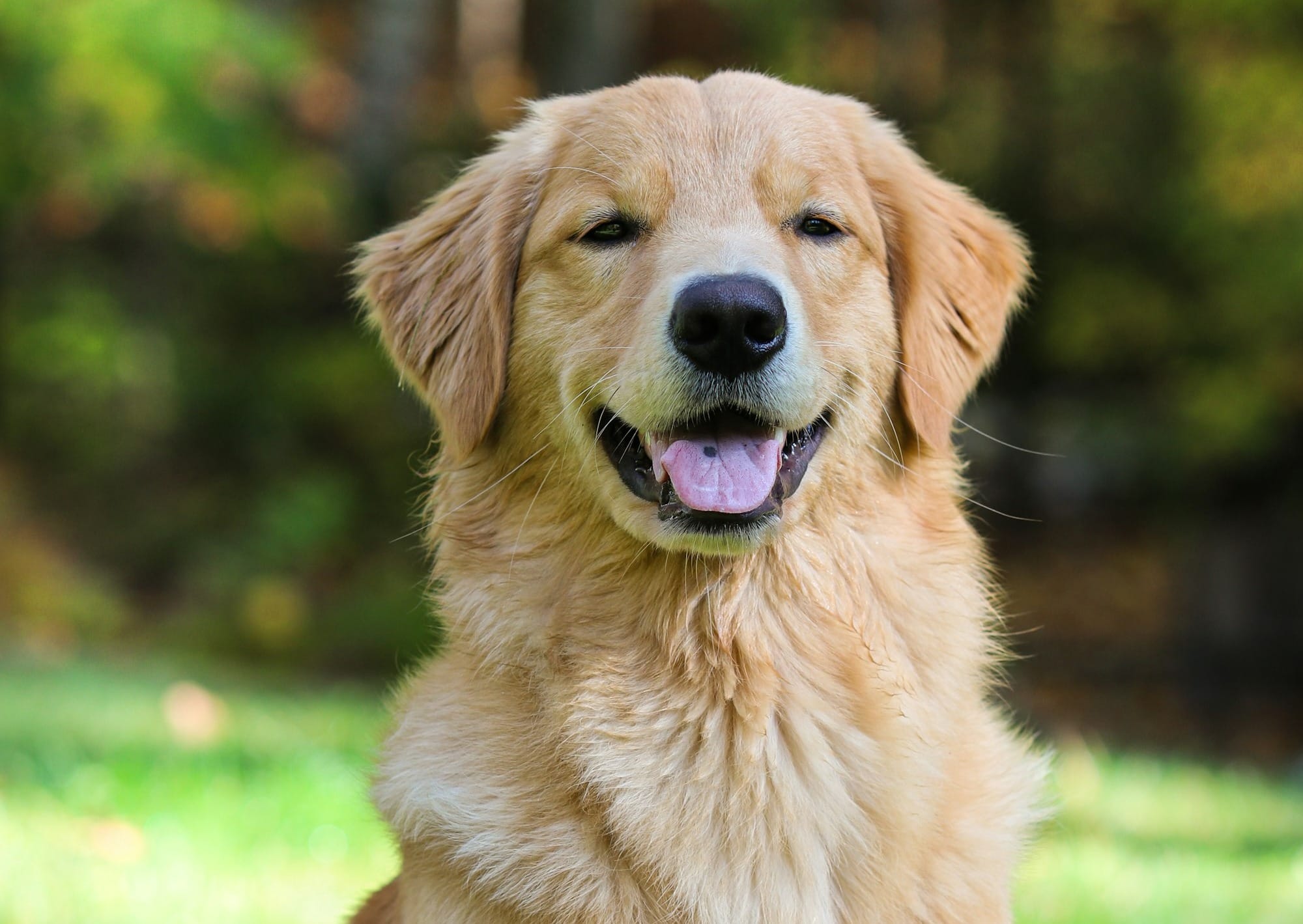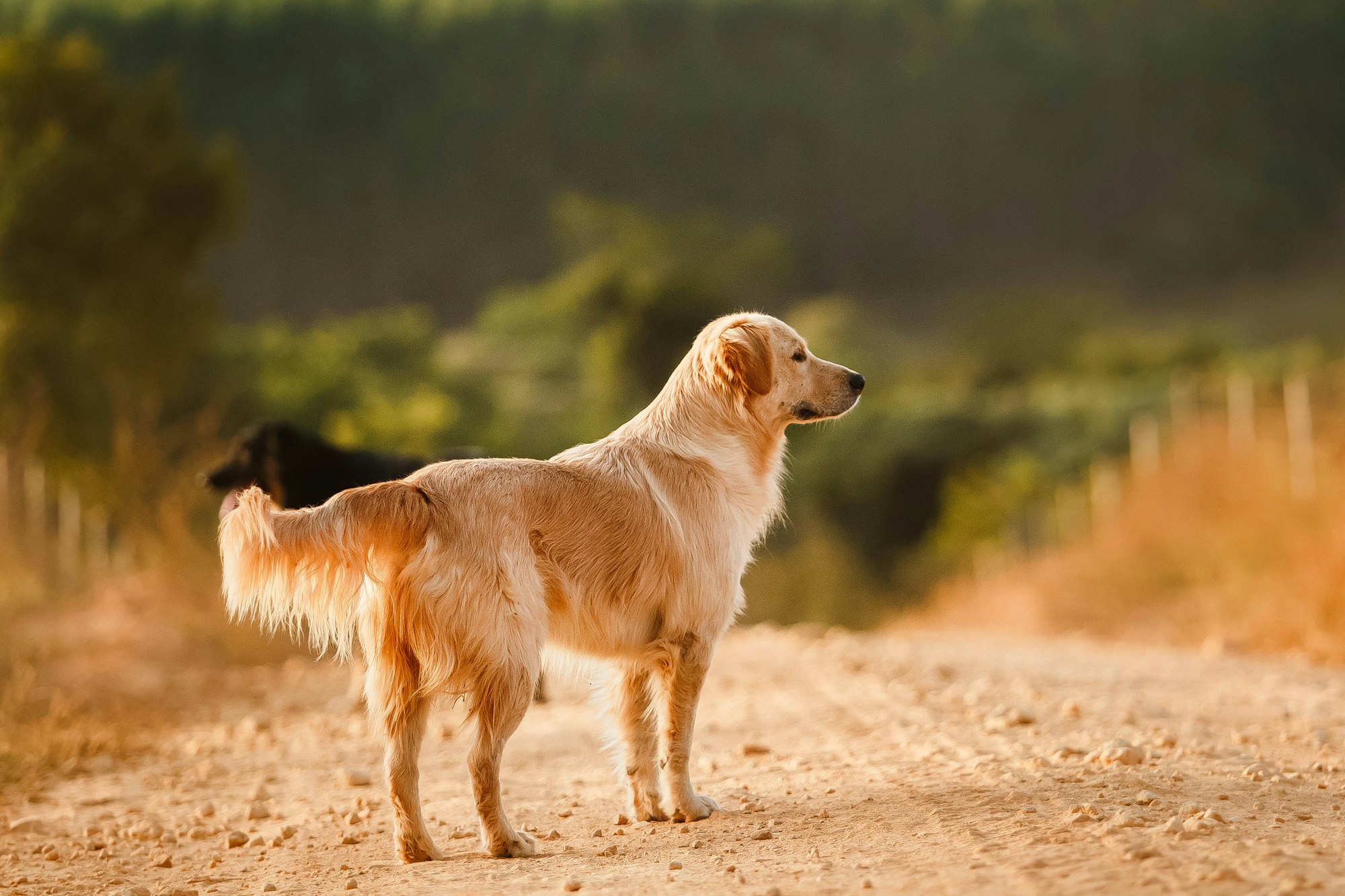Golden Retrievers are among the most beloved dog breeds worldwide, renowned for their friendly demeanor, intelligence, and striking golden coats. Originating from Scotland in the late 19th century, these dogs were initially bred for retrieving game in hunting, a task that demands both agility and a gentle grip. Today, they are cherished as family pets, assistance dogs, and in roles that require high levels of trainability and obedience.
What sets Golden Retrievers apart is not just their amiable nature but also their remarkable physical abilities. These dogs possess a unique blend of strength, endurance, and agility, making them adept at various physical activities, including jumping. Their capability to leap high is not only a testament to their athletic prowess but also an essential aspect of their overall health and vitality.

This article aims to explore the intriguing question: How high can a Golden Retriever jump? We delve into the factors that influence their jumping ability, from anatomical aspects to training techniques, and examine the importance of nurturing this skill for their physical well-being. Through this exploration, we seek to provide a comprehensive understanding of the athletic capabilities of these charming canines.
The Golden Retriever Breed: An Overview
The Golden Retriever, with its origins tracing back to Scotland in the late 1800s, was initially bred as a hunting dog. The breed was developed to retrieve waterfowl during hunting expeditions, an activity that required a dog that was not only strong and capable in the water but also gentle with the catch. This selective breeding has shaped the Golden Retriever's physical and temperamental traits, making them an ideal companion both in the field and at home.
Physically, Golden Retrievers are characterized by a well-proportioned, muscular build, with a dense, water-repellent coat and a broad head. They typically weigh between 55 to 75 pounds, with a strong back, powerful legs, and a tail that assists in swimming. These features contribute to their agility, endurance, and, notably, their jumping ability, which is a blend of strength and coordination.
Temperamentally, Golden Retrievers are known for their friendly, tolerant, and intelligent nature. They are highly trainable, eager to please, and get along well with people and other pets. Their general health is robust, but they require regular exercise and mental stimulation to maintain both physical and psychological well-being. This combination of physical attributes and temperament makes them not only excellent athletes but also beloved family pets.
Understanding Canine Anatomy and Jumping Mechanics
The remarkable ability of dogs, especially breeds like Golden Retrievers, to jump high is rooted in their unique anatomical structure. Key elements of a dog's anatomy that facilitate jumping include a strong, flexible spine, well-developed hind limb muscles, and a robust skeletal structure. The hind limbs, particularly the muscles of the thighs and the hips, play a crucial role in propelling the dog upward. These muscles store elastic energy, which is released during the jump, providing the necessary power and thrust.
Golden Retrievers have a distinct advantage in their muscle structure and body composition that contributes to their jumping capability. Their athletic build, characterized by a balanced ratio of muscle to body weight, enables them to generate significant force while maintaining agility. This balance is crucial in achieving high jumps and is more pronounced in them compared to heavier or more robust breeds, which may have greater strength but less agility.
In comparison with other dog breeds, Golden Retrievers strike an optimal balance between strength and flexibility. Breeds like Greyhounds or Whippets, renowned for their speed, may excel in rapid acceleration but may not have the same level of vertical leap. Conversely, larger, more muscular breeds like Mastiffs possess immense strength but are less equipped for activities requiring agility and high jumps. This makes Golden Retrievers particularly adept at activities that require both power and finesse, such as jumping.
Factors Influencing Jumping Ability in Golden Retrievers
The jumping ability of Golden Retrievers is influenced by a myriad of factors ranging from genetics to overall health and fitness. Understanding these factors is crucial for anyone looking to nurture and maximize a Golden Retriever's leaping potential.
Genetics and Athleticism:
Genetics play a pivotal role in determining a Golden Retriever's physical capabilities. The breed's genetic makeup predisposes them to certain athletic traits, including strong hindquarters, flexibility, and a balanced body structure, all of which are essential for effective jumping. Breed-specific traits, such as a natural inclination for activities like retrieving and swimming, also contribute to their agility and power.
Age and Developmental Impact:
A Golden Retriever's age significantly affects its jumping ability. Puppies and young dogs, still in the development phase, typically exhibit a remarkable increase in agility and jumping prowess as they grow. However, it's essential to manage the intensity and frequency of jumping in young dogs to prevent joint and bone damage. Conversely, as dogs age, their jumping ability may decrease due to reduced muscle mass, joint stiffness, and overall decline in physical fitness.
Diet and Nutrition:
Proper diet and nutrition are vital for maintaining a Golden Retriever's jumping ability. A balanced diet rich in proteins, vitamins, and minerals is necessary to build and maintain strong muscles and bones. Additionally, maintaining an optimal weight is crucial; overweight dogs may struggle with jumping due to increased stress on joints and reduced stamina.
Health and Fitness Influence:
Overall health and fitness levels have a direct impact on a Golden Retriever's ability to jump. Regular exercise not only strengthens the muscles required for jumping but also enhances cardiovascular health, ensuring the dog has the stamina for sustained physical activity. Preventative health care, including regular check-ups, vaccinations, and parasite control, also plays a significant role. A healthy dog is more likely to exhibit better jumping abilities than one struggling with health issues.
A combination of favorable genetics, appropriate developmental exercise, a well-balanced diet, and good overall health and fitness are essential to maximize a Golden Retriever's jumping ability. By paying attention to these factors, owners can ensure their Golden Retrievers reach and maintain their athletic best.

Training Techniques for Enhancing Jumping Skills
Training a Golden Retriever to enhance its jumping skills involves a combination of safe and effective methods, consistent practice, and a mindful approach to avoid overtraining and injury. The goal is to gradually build the dog's strength, coordination, and confidence.
Safe and Effective Training Methods:
Begin with basic obedience training to establish a foundation of discipline and responsiveness. For jumping training, start with low-height obstacles to avoid straining the dog's muscles and joints. Gradually increase the height as the dog becomes more comfortable and proficient. Use positive reinforcement techniques, rewarding the dog with treats, praise, or play for successful jumps. This not only motivates but also strengthens the bond between the dog and the trainer.
Step-by-Step Training Guide:
- Start with a warm-up session to prepare your dog's muscles, including light walking or jogging.
- Introduce a low obstacle, like a small hurdle. Encourage your dog to approach and inspect it.
- Lead your dog over the hurdle using a treat or a toy. Praise them when they successfully cross it.
- Gradually raise the height of the hurdle as your dog gets comfortable. Ensure the increase is gradual to prevent any fear or injury.
- Incorporate jumping into a regular exercise routine, mixing it with other activities to maintain your dog's interest.
Consistency and Patience in Training:
Regular training sessions are crucial for building and maintaining jumping skills. However, it's essential to be patient. Every dog learns at its own pace, and pushing too hard can lead to frustration or loss of interest. A consistent, patient approach yields the best results.
Preventing Overtraining and Injury:
Always be vigilant for signs of fatigue or discomfort in your dog. Provide ample rest between training sessions and ensure your dog has a balanced exercise regimen that doesn't focus solely on jumping. Consult a veterinarian or a professional dog trainer to ensure that the training intensity and frequency are appropriate for your dog's age, breed, and health status.
By following these training techniques, owners can safely and effectively enhance their Golden Retrievers' jumping skills, fostering a healthy, active lifestyle for their canine companions.
Record-Holding Golden Retrievers and Notable Achievements
Golden Retrievers, known for their agility and athleticism, have made remarkable achievements in various competitions, showcasing their extraordinary jumping abilities. One notable jumper was a Golden Retriever named Buddy, who set a record in a national agility competition by clearing a jump of over six feet. His feat not only demonstrated the breed's physical capabilities but also highlighted the importance of training and conditioning.
Another exceptional case is that of Daisy, a Golden Retriever who gained attention for her impressive high jumps during frisbee competitions. Her ability to leap several feet into the air to catch frisbees wowed audiences and illustrated the breed's coordination and strength. Daisy's achievements were a testament to her rigorous training regimen and her natural athletic prowess.
These stories of record-holding Golden Retrievers underscore the breed's potential for high jumping. While not every Golden Retriever may reach such heights, these examples serve as inspiration and showcase what can be achieved with the right combination of genetics, training, and dedication.

Health Considerations and Jumping
While jumping can be a healthy and enjoyable activity for Golden Retrievers, it's important to be aware of the potential risks and signs of injury associated with this high-impact exercise. Excessive or improperly executed jumping can lead to strain or injury, particularly in the joints, muscles, and spine.
Risks of High Jumping:
One of the primary risks is the development of joint problems, such as hip or elbow dysplasia, conditions that Golden Retrievers are predisposed to. Repetitive high-impact activities can exacerbate these conditions. Additionally, there is a risk of muscle strains, ligament tears, and spinal injuries, especially if the dog lands improperly or jumps on hard surfaces.
Recognizing Signs of Strain or Injury:
Dog owners should be vigilant for signs of discomfort or pain in their pets. These can include limping, reluctance to jump or play, vocalizing pain, or changes in behavior. Swelling or tenderness in the legs or back are also red flags that require immediate attention.
Veterinary Care and Regular Health Checks:
Regular veterinary check-ups are crucial for monitoring a Golden Retriever's health, particularly if they are involved in activities like jumping. A vet can provide guidance on safe exercise practices and identify any early signs of joint or muscle problems. They may also recommend supplements or specific diets to support joint health. In cases of suspected injury, prompt veterinary attention is essential to prevent further damage and ensure proper treatment.
While jumping is a beneficial activity for Golden Retrievers, balancing it with an awareness of potential risks and maintaining regular veterinary care is essential for the health and well-being of these active dogs.
The Role of Exercise and Play
Exercise and play are integral to a Golden Retriever's overall well-being, with specific activities that can effectively encourage and improve their jumping skills. Engaging in varied types of play not only enhances their physical abilities but also contributes to their mental health.
Types of Play to Encourage Jumping:
Activities such as fetch, where a ball or frisbee is thrown high into the air, naturally encourage jumping. Setting up a makeshift agility course with hurdles or hoops in your backyard can also be a fun and effective way to promote jumping. These types of play mimic natural canine behaviors and provide a healthy outlet for their energy.
Benefits of Exercise
Regular exercise is crucial for maintaining a Golden Retriever’s muscle tone, joint health, and cardiovascular fitness, all of which are essential for effective jumping. It also helps in managing their weight, reducing the risk of obesity-related health issues. Moreover, exercise is vital for mental stimulation, preventing boredom and related behavioral issues.
Recommended Games and Activities:
Apart from fetch and agility training, incorporating games like tug-of-war (which builds strength) and hide-and-seek (which enhances agility and mental sharpness) can be beneficial. Swimming is another excellent low-impact exercise that strengthens muscles used in jumping without putting excessive strain on joints.
By incorporating these activities into a Golden Retriever's routine, owners can significantly enhance their jumping ability while also ensuring their overall physical and mental health is catered to.
Expert Insights and Opinions
Seeking insights from veterinarians, canine sports professionals, and breeders sheds light on the nuanced balance between a Golden Retriever's natural jumping ability and the role of training. These experts emphasize that while genetics play a significant part in a dog's physical capabilities, targeted training and proper care are equally crucial in developing and maintaining these skills.
Veterinarian Perspectives:
Veterinarians stress the importance of health assessments before embarking on intensive training. They advise regular check-ups to ensure that a dog is physically fit for activities like jumping, and to identify any underlying health issues that may be aggravated by such exercises.
Canine Sports Professionals' Views:
Professionals involved in canine sports highlight the importance of a structured training regimen tailored to each dog's ability and pace. They recommend starting with basic exercises and gradually increasing difficulty, always being mindful of the dog's response and comfort level.
Breeders' Insights:
Breeders of Golden Retrievers often speak to the breed's natural aptitude for activities that involve jumping and retrieving. However, they also caution against pushing the dog beyond its limits, emphasizing that each dog is unique and should be trained according to its individual strengths and weaknesses.
All experts agree on the importance of a balanced approach that combines natural ability with appropriate training. They underscore the need to tailor activities to suit individual dogs, considering factors like age, health, and temperament. This tailored approach ensures not only the development of jumping skills but also the overall well-being and happiness of the dog.

Conclusion:
In conclusion, understanding and nurturing a Golden Retriever’s jumping ability involves a blend of genetics, proper training, and health considerations. From their inherent athletic predisposition to the vital role of a balanced diet and regular exercise, each aspect plays a crucial part in maximizing their leaping potential. Training techniques that emphasize safety and individual capabilities are essential, as is the need for regular health checks and awareness of potential risks. By appreciating and fostering these facets, we can ensure that our Golden Retrievers not only excel in their physical abilities but also enjoy a healthy, fulfilling life.
FAQs
- What is the average jumping height for a Golden Retriever?
Answer: The average jumping height for a healthy Golden Retriever is typically between 3 to 4 feet. However, with proper training, some can jump higher. - Are Golden Retrievers naturally good jumpers?
Answer: Yes, Golden Retrievers are naturally good jumpers due to their athletic build and energetic nature. They have strong hind legs and a flexible body that aids in jumping. - How can I safely train my Golden Retriever to jump higher?
Answer: Start with low obstacles and gradually increase the height as your dog becomes more comfortable. Use positive reinforcement and ensure the training is consistent and gradual to avoid injury. - At what age can I start training my Golden Retriever to jump?
Answer: You can start basic jumping training when your Golden Retriever is about a year old, as their joints and bones are more developed and less prone to injury. - What health concerns should I be aware of when training my Golden Retriever to jump?
Answer: Be aware of joint issues like hip dysplasia, and watch for signs of strain or injury, such as limping or reluctance to jump. Regular vet check-ups are important. - Can diet and nutrition affect my Golden Retriever's jumping ability?
Answer: Absolutely. A balanced diet rich in proteins and essential nutrients is vital for muscle strength and overall health, which directly influences jumping ability. - Is it okay for older Golden Retrievers to jump?
Answer: While older Golden Retrievers can jump, it's important to be more cautious. As they age, they are more prone to joint issues and injuries, so jumping heights should be reduced and closely monitored.




